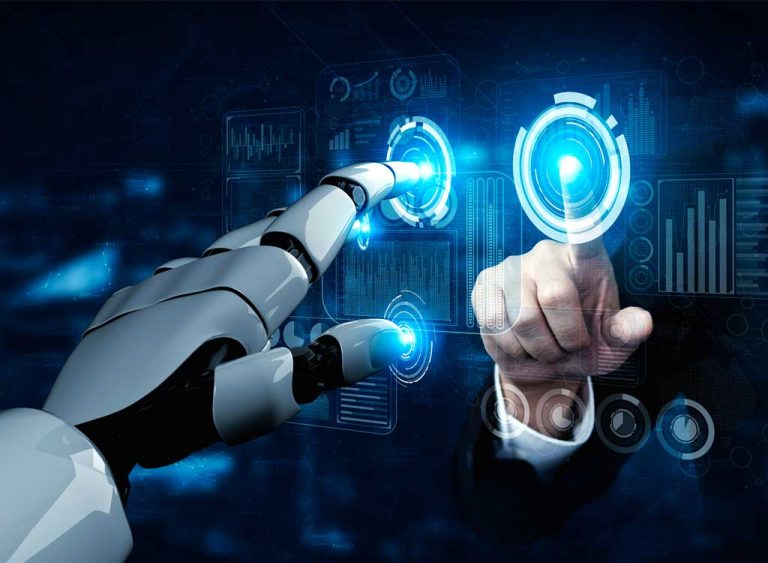Can machines think? Will there be digital systems imaginable that will perform well in the mimicry game?
These two questions, which have surely crossed your mind at some point, were posed by Alan Turning in 1950 in his essay "Computing Machinery and Intelligence"
Machine Learning or Automatic Learning, is a branch of Artificial Intelligence whose objective is to develop techniques that allow machines to "learn" and whose fundamental pillars are the analysis of large amounts of data, statistics and the resolution of complex problems. In this way the objective of Machine Learning is that a system is capable of creating knowledge, either in a supervised manner or on its own.
And how does a machine "learn"? It is an algorithm that compares new data with data we have previously provided, looks for patterns of behavior based on past processes, and predicts future behavior. An example of this would be the way an e-commerce site offers complementary items to the consumer when he has already chosen someone else and put him in his shopping cart. It does this because it has analyzed which items it has seen before, on which pages it has stopped the longest, and therefore, it goes ahead and offers the user purchase suggestions.
Google Images is another great example of a Machine Learning algorithm. Since a computer does not see the way humans do, to identify a flower, to give another example, Google analyzes the parameters of shapes, colors, images previously provided to it as a model to help it identify what a flower is. In this way a learning model contains many parameters that turn an image into an identifiable pattern for the computer.
How can Machine Learning help the insurance industry?
- Knowing our customers better: as we have already said, these algorithms collect data about the users, who they are, where they visit us from, how old they are, and what their specific needs are. All this information provided in conjunction with Big Data creates detailed profiles and sheets of each user.
- Improve the relationship between the customer and the service centers, because it is able to recognize also natural spoken and written language, in this way through interactions Machine Learning offers fast and efficient solutions to a customer in a personalized way. The chatbot or virtual assistants are one of the greatest exponents of this care, we can see that it is increasingly common to have small chat windows or live support on company pages to guide the user or help solve problems through natural language processing.
- Optimize the Customer Journey or the "journey" a customer makes through interactions across our company. In the stages of offering services and contracting insurance, it allows us to analyse which products are most suited to the profile of a new customer, and after the purchase it allows us to know the degree of satisfaction or feeling towards the customer. In this way, we can also predict possible customer withdrawals and abandonment before the process is completed and help to take decisions and measures to avoid it.
- To prevent fraud by analyzing the relationships between the entities involved and events that could be suspicious or of interest, so the learning algorithm collects, compares and cross-checks data and identifies patterns to establish these relationships.
- Establish dynamic pricings that adapt to the profile and behavior of each client. Traditionally, car insurance, for example, established static prices based on the market situation, the competition or the model of the car, among other variables. However, the problem of abandonment or reduction of contract rates arises when customers look for cheaper alternatives when they feel that the price established really exceeds their needs. Making use of technologies such as Internet of Things and Machine Learning, devices could be installed in vehicles that record the customer's behaviour and driving pattern. Variables such as what type of roads you drive, how fast you usually go, or what distances you travel would now establish a more realistic risk-based price range, so a person over 70 would probably not pay the same as a young adult of 25.
- Pro-active management: imagine that an insurance company has 3 different clients in the same place for questions of damage and flaws in the office building, one of its policyholders has had his pipes damaged due to age and has caused a flood. Fixing the incident would not only involve the cost of repairing the pipes, but would probably also involve replacing floorboards, carpeting and other water-damaged objects. Then the machine learning, based on what has happened, will know that this is very likely to happen to the other two insured parties in the same building, so instead of waiting for the pipe to break and a disaster to be repaired, it will suggest that we get ahead of the event and repair the pipes before they are damaged. This makes us a proactive rather than reactive company, which is a great value for customers.
And as Thomas H. Davenport of The Wall Street Journal mentions
"Humans can typically create one or two good models a week, while a machine can create thousands of models in a week.
Then machine learning would undoubtedly bring value and competitive advantage to insurers. After all, the technology and the data are there.











